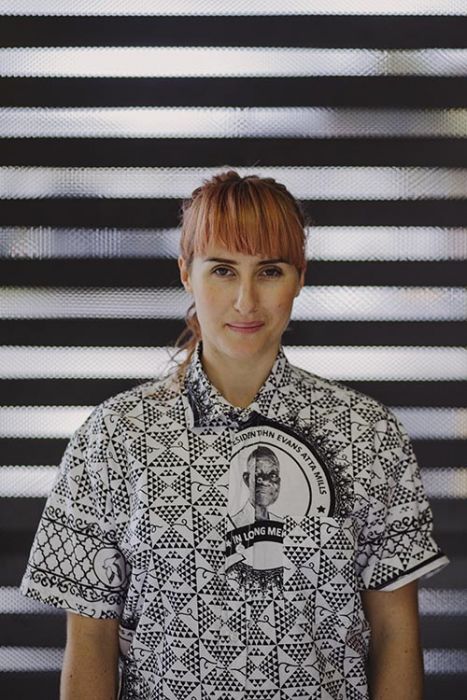What drew you to architecture as a vocational choice?
I didn’t finish high school. I came to study a little late but with more focus and perspective. The decision to study architecture came like an epiphany, just a decision that came to me without any seeming precedent. It made sense. I come from a family that has always been socially engaged, political, and full of creative and conceptual thinkers and architecture seemed to combine all my skills and interests.
What is the significance of the name Future Method which you chose for your business?
I founded Future Method about three years ago. I was lucky to work for the incredible architect Ric Leplastrier who nurtured me into my own practice. As a lone female practitioner it’s been a challenge but also very rewarding. The name Future Method comes from my observation that real change emerges out of re-considering how we build, what we build things from and for whom, essentially, the methodology by which we work.
I also didn’t want to use my own name and I wanted the practice to grow and be its own vehicle independent of me personally. I am now working with Joel Spring, a young Wiradjuri architect who grew up in Redfern. Joel has brought very important conversations to the table. His input as an Indigenous architect is invaluable, but he’s also a very talented designer and creative intellectual.
How and in what context did you first hear about the redevelopment of Waterloo Public Housing Estate?
I’ve been aware of the Central to Eveleigh project for some time but really what spurred me to get involved was seeing that none of my professional community were on the ground talking to people and asking them what they wanted and how to help.
I was also motivated by witnessing the loss of The Block to over-development.
So, not very far away from there, I could see what the vulnerable but vibrant and resilient community of Waterloo was about to go through and I couldn’t help but become involved.
What is the purpose of the so-called People’s Plan as conceived by you?
We’re not really doing a People’s Plan. This may eventuate out of resident action but at the moment we are just talking with people and making a space on site and getting a whole bunch of interested and active community members and professionals engaged in the conversation. This project is about what we want our city to be. We can no longer continue as we have been. We have to find a way for there to be a healthy mix of private and public housing, and we want to see real affordability and inclusion. How we measure and quantify other or “non-traditional” values within this process is key. This is what we’re interested in illuminating and helping put forward at this stage.
How do you propose to involve the Waterloo residential community?
People are really fed up with being asked along to meetings and asked what they want when really their big battle is often with simple things like the common areas of their buildings being cleaned or their houses being maintained. Firstly, we want to help out on that front, giving something back before we ask anything more of them. We are offering our networks to the already established Odd Jobbers network. We’re also just going about things in the usual way by attending meetings, chatting on the street, using the already existing organisations and their networks to reach out. It takes time but it’s the only way to build real connections and trust.
What form will your Plan take, and can it be viewed?
We will be making a big model of the site, as it exists. We will do this collaboratively, working with each of the precinct groups. Before anything is proposed or any participatory design process is undertaken, we first need to understand how people use their neighbourhood: where are the health, social and recreational services, what already exists and what is lacking, what spaces are used and how. Everything will be open and on display in our dedicated space on the estate.
What is the best outcome you could possibly hope for?
I hope that people’s voices are listened to and included in the process in a real and engaged way. This is really all it takes. The outcome of the project will be determined by how well this is done.
Is your work funded, and are there ways in which the supportive public can contribute to the project?
We have plenty of capacity and resources at the moment. Currently all the work we’ve done has been off our own bat but many people in the community are working tirelessly without remuneration. What is most important is that people take the short walk down to all the regular meetings that are taking place and find out how they can help. In a city like Sydney our most valuable asset is time. Give your time and advocate for things you value if nothing else.





